Contents
Page List
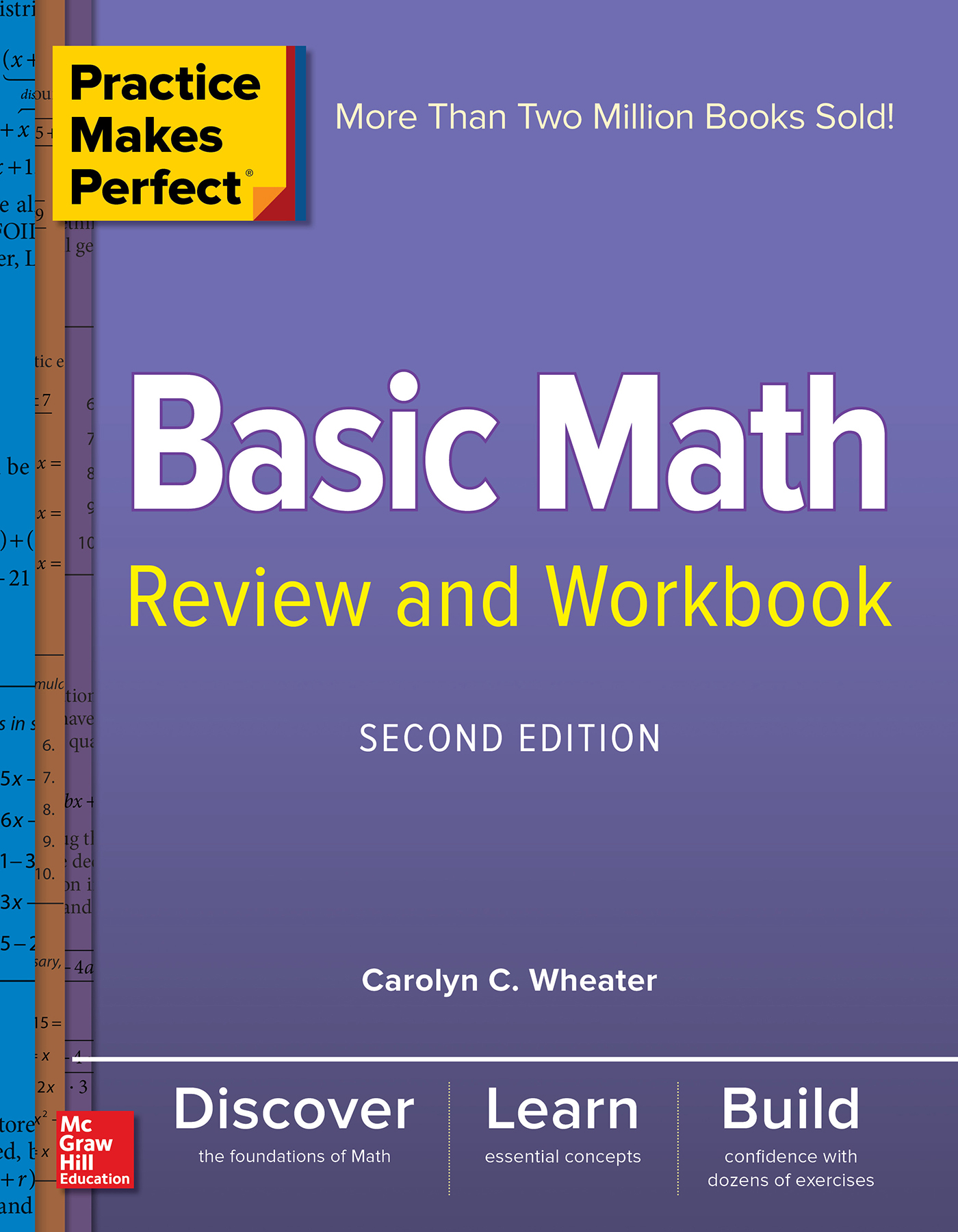

Copyright 2018, 2012 by McGraw-Hill Education. All rights reserved. Except as permitted under the United States Copyright Act of 1976, no part of this publication may be reproduced or distributed in any form or by any means, or stored in a database or retrieval system, without the prior written permission of the publisher. ISBN: 978-1-26-013514-5
MHID: 1-26-013514-4 The material in this eBook also appears in the print version of this title: ISBN: 978-1-26-013513-8, MHID: 1-26-013513-6. eBook conversion by codeMantra
Version 1.0 All trademarks are trademarks of their respective owners. Rather than put a trademark symbol after every occurrence of a trademarked name, we use names in an editorial fashion only, and to the benefit of the trademark owner, with no intention of infringement of the trademark.
Where such designations appear in this book, they have been printed with initial caps. McGraw-Hill Education eBooks are available at special quantity discounts to use as premiums and sales promotions or for use in corporate training programs. To contact a representative, please visit the Contact Us page at www.mhprofessional.com. All trademarks or copyrights mentioned herein are the possession of their respective owners and McGraw-Hill Education makes no claim of ownership by the mention of products that contain these marks. McGraw-Hill Education, the McGraw-Hill Education logo, Practice Makes Perfect, and related trade dress are trademarks or registered trademarks of McGraw-Hill Education and/or its affiliates in the United States and other countries and may not be used without written permission. All other trademarks are the property of their respective owners.
McGraw-Hill Education is not associated with any product or vendor mentioned in this book. Interior design by Village Bookworks TERMS OF USE This is a copyrighted work and McGraw-Hill Education and its licensors reserve all rights in and to the work. Use of this work is subject to these terms. Except as permitted under the Copyright Act of 1976 and the right to store and retrieve one copy of the work, you may not decompile, disassemble, reverse engineer, reproduce, modify, create derivative works based upon, transmit, distribute, disseminate, sell, publish or sublicense the work or any part of it without McGraw-Hill Educations prior consent. You may use the work for your own noncommercial and personal use; any other use of the work is strictly prohibited. Your right to use the work may be terminated if you fail to comply with these terms.
THE WORK IS PROVIDED AS IS. McGRAW-HILL EDUCATION AND ITS LICENSORS MAKE NO GUARANTEES OR WARRANTIES AS TO THE ACCURACY, ADEQUACY OR COMPLETENESS OF OR RESULTS TO BE OBTAINED FROM USING THE WORK, INCLUDING ANY INFORMATION THAT CAN BE ACCESSED THROUGH THE WORK VIA HYPERLINK OR OTHERWISE, AND EXPRESSLY DISCLAIM ANY WARRANTY, EXPRESS OR IMPLIED, INCLUDING BUT NOT LIMITED TO IMPLIED WARRANTIES OF MERCHANTABILITY OR FITNESS FOR A PARTICULAR PURPOSE. McGraw-Hill Education and its licensors do not warrant or guarantee that the functions contained in the work will meet your requirements or that its operation will be uninterrupted or error free. Neither McGraw-Hill Education nor its licensors shall be liable to you or anyone else for any inaccuracy, error or omission, regardless of cause, in the work or for any damages resulting therefrom. McGraw-Hill Education has no responsibility for the content of any information accessed through the work. Under no circumstances shall McGraw-Hill Education and/or its licensors be liable for any indirect, incidental, special, punitive, consequential or similar damages that result from the use of or inability to use the work, even if any of them has been advised of the possibility of such damages.
This limitation of liability shall apply to any claim or cause whatsoever whether such claim or cause arises in contract, tort or otherwise.
Contents
Preface
In the middle of the 20th century, the terms
numeracy and
innumeracy entered into our vocabulary. The words were coined as parallels to
literacy and
illiteracy, the ability or inability to read and write at a level adequate to function in society. Numeracy was used to mean a numerical literacy, a competence with the basic mathematics that you need to function in the modern world. When some people hear a phrase like
basic mathematics, they think it just refers to simple arithmetic. Thats not the case at all.
A numerically literate person can do arithmetic, of course, but also understands our number system, has a sense of geometric and spatial relationships, and can intelligently analyze the flood of numerical information all around us. Practice Makes Perfect: Basic Math gives you the opportunity to strengthen your essential mathematical skills by review and practice. Literate people not only can read; they do read. They practice the skills over and over again, day after day. Numeracy, mathematical literacy, also requires that you exercise the mental muscles that you use to calculate, to determine relationships, and to make sense of the data you encounter. Like any skill, basic mathematics needs to be practiced.
The exercises in this book are designed to help you acquire and develop the skills you need to be mathematically literate. With patience and practice, youll find that youve assembled an impressive set of tools and that youre confident about your ability to use them properly. You must keep working at it, bit by bit. Be patient. You will make mistakes, but mistakes are one of the ways we learn, so welcome your mistakes.
Numbers and arithmetic
Just as every culture evolves its own language, different societies at different points in history have had different ways of writing and thinking about numbers.
Numbers and arithmetic
Just as every culture evolves its own language, different societies at different points in history have had different ways of writing and thinking about numbers.
Youve probably had some experience with Roman numerals, if only for dates on cornerstones, but for day-to-day use in arithmetic, youre far more comfortable with the numerals that come from Hindu and Arab mathematics. As opposed to the Mayan system of numeration based on 20, or some other ancient systems with other bases, our system is based on 10s, with the 10 digits 0, 1, 2, 3, 4, 5, 6, 7, 8, and 9 (unlike the Babylonian system with symbols only for 1 and 10). Its a place value system, meaning that the position of the digit within the number affects its value. The 7 in 57 is worth less than the 7 in 87,345, because theyre in different places.
The families of numbers
The number system we use today didnt suddenly appear one day, fully formed. It developed and grew in response to peoples need to count, to measure, and to evaluate different things.
The natural numbers, or counting numbers, are just that: numbers used for counting. The natural numbers include 1, 2, 3, 4, and so on, and go on without end. You might notice there is no zero. If you dont have anything, you dont have to count it, so zero isnt a counting number. Once you start counting, however, you pretty quickly want a zero, so if you add zero to the natural numbers, you have what are called the whole numbers: 0, 1, 2, 3, 4, and so on. Once you can count whole things, you find yourself wanting to talk about parts of things, so you start to need


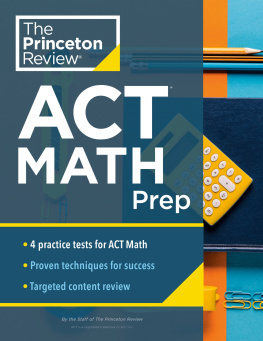
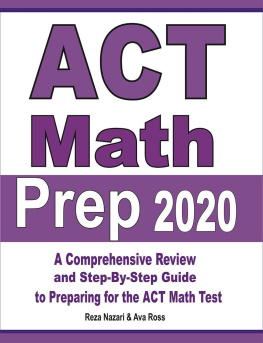
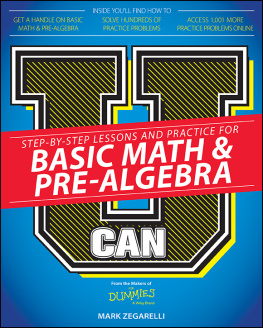
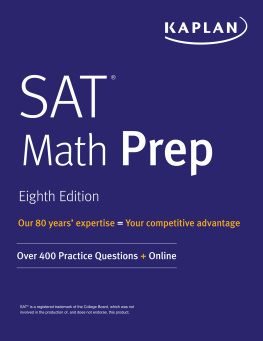
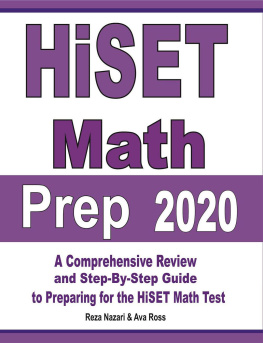

 Copyright 2018, 2012 by McGraw-Hill Education. All rights reserved. Except as permitted under the United States Copyright Act of 1976, no part of this publication may be reproduced or distributed in any form or by any means, or stored in a database or retrieval system, without the prior written permission of the publisher. ISBN: 978-1-26-013514-5
Copyright 2018, 2012 by McGraw-Hill Education. All rights reserved. Except as permitted under the United States Copyright Act of 1976, no part of this publication may be reproduced or distributed in any form or by any means, or stored in a database or retrieval system, without the prior written permission of the publisher. ISBN: 978-1-26-013514-5